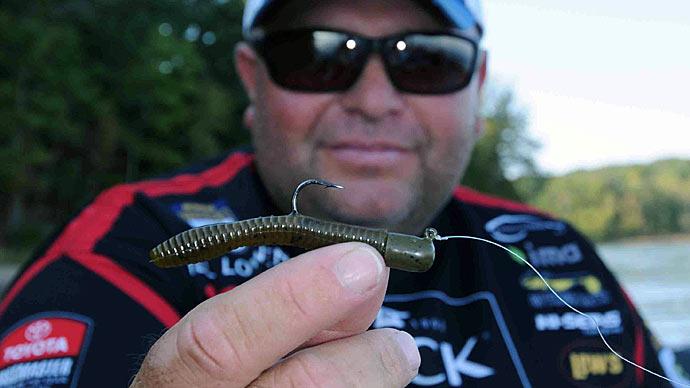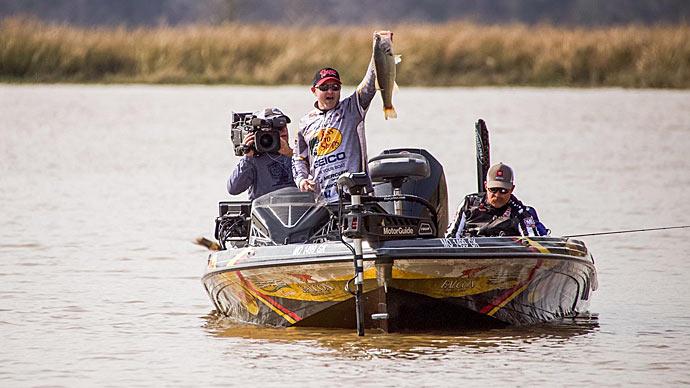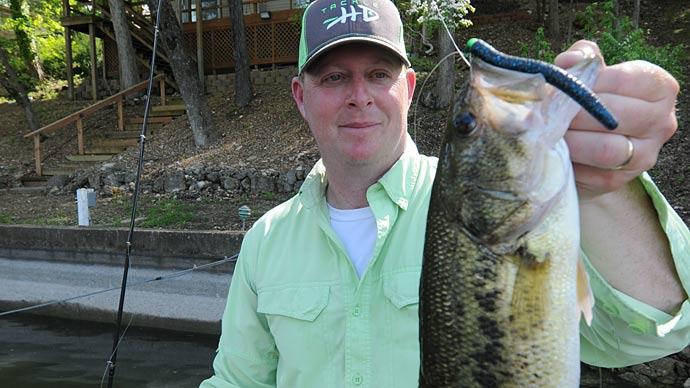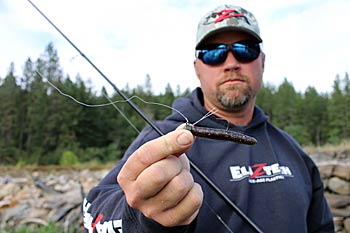
By now, you have probably heard of the Ned Rig. It has been one of the most talked-about techniques over the past few years, and it continues to grow in popularity. The bite-sized finesse approach gets bites when the fishing is tough, and it has proven itself as a great way to catch numbers of fish.
But, it is not just a numbers technique. It will catch big bass. Just ask Major League Fishing pro Luke Clausen, who always has one rigged up whether he is on the pro tour or fishing for fun around his home in Washington.
Luke’s Initial Thoughts on the Ned Rig
Clausen will be the first to admit that he wasn’t initially a fan of the Ned Rig. He is a long-time pro-staffer for Z-Man Fishing, who helped make this rig so popular, and was among the first anglers “in the know” before they released the Finesse TRD soft-plastic and technique-specific jigheads several years ago.
“I told Z-Man I thought it was a bad idea when I first saw it. I figured it would catch a bunch of 10-inchers, but I can admit I was wrong,” said Clausen.
“I’ve learned that you don’t have to drag it out in deep water, and you can fish it with bigger bass in mind.”
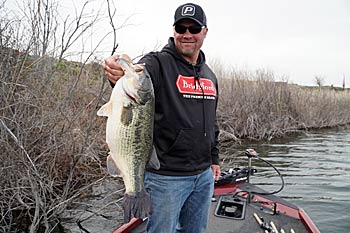
Small Bait, Big Bass
Clausen feels that there are certain situations where a Ned Rig excels for large bass. He says that cold and clear water are the prime time for big bass on the Ned but adds that it will work all year.
“When the water is clear and still cold, the fish are in a negative mood, and the Ned Rig will catch big bass better than just about any other technique. You have to fish it around places that big bass live,” he began. “I like to pitch it near brush, cattails, and shallow docks. Fish it just like you would like a regular jig,” said Clausen.
This finesse technique has been so hot because it seems to produce when nothing else will. “It is so subtle. When the water is cold, or the bass are pressured, they aren’t as excited about a jig or ChatterBait, but they will have no problem eating a Finesse TRD.”
Beefed Up Ned Rigs
Many companies produce bigger plastics and heavy gauge jigheads, but is that still a Ned Rig? That is debatable. According to Clausen, part of the appeal and success of the Ned Rig is the diminutive nature of the bait and light jighead.
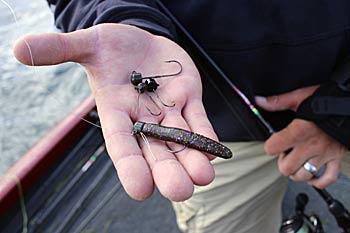
“I like a bigger hook than many people use, but I still want the jighead to be as light as I can get away with. I use the 1/10 ounce size the most because it allows the bait to spiral down and not fall too quickly,” added Clausen.
His jighead of choice is the Z-Man Fishing Power Finesse ShroomZ. It has a longer shank, 3/0 hook, and a wire weed guard. “You can throw it right into brush and places where you normally fish a jig,” he said.
There are now many to choose from soft plastics as the rig evolves, but Clausen says it is hard to beat the original.
"Just for the sheer number of bites it produces, the standard Finesse TRD will always be a good choice. I will switch to the Big TRD if I want a little bulkier presentation, and the TRD TicklerZ has been a great one for smallmouth,” said the Washington pro.
Color Selection
There are now many color options for Z-Man’s Ned Rig baits, and more continue to be released. Color selection often comes down to conditions and personal preference, but Clausen gave us a quick rundown on some of his favorites.
“It is hard to beat Green Pumpkin anywhere in the country. Another of my favorites for when the water is clear is a color called Meat Dog,” he says. “When smallmouth are in play, Mood Ring and PB&J are two of my favorites. The Smelt color is perfect if the bass are focused on eating shad.”
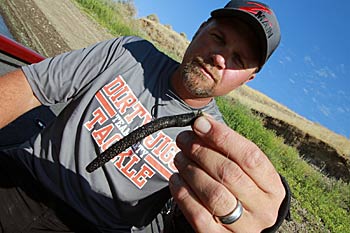
Retrieves and Gear Selection
When fishing a Ned Rig, you can utilize several different retrieves. Clausen often fishes it much like he does a shaky head with several short hops as the bait stays close to the bottom, but says the decent after the initial cast is where many bites occur.
“When you are using that light of a bait, it will fall slowly and get the attention of bass in the area. I notice that many of my bites happen right when it falls, " said Clausen. “If you start to see this, you can replicate it during your cast by lifting your rod high and letting the bait spiral down again. I’ll try this halfway back during my retrieve, and it will get you a few extra bites.”
With so many of his bites happening on the fall, Clausen firmly believes in a high-visibility braided line to detect bites. He uses 10-pound Yo-Zuri Superbraid in the High Vis Yellow color and matches it with an 8-pound Yo-Zuri Top Knot 100% Fluorocarbon leader.
Spinning gear is a must for this technique, and Clausen prefers a 6’10” medium G.Loomis GLX 822 paired with a 2500 size Shimano Stradic Ci4+ reel.
The Ned Rig has proven to produce bites for the casual angler to the top professional anglers. It appears that this little rig is here to stay.
BassResource may receive a portion of revenues if you make a purchase using a link above.


